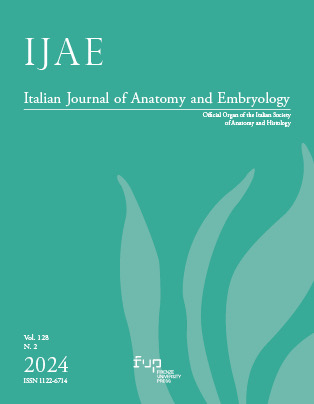Published 2024-12-31
Keywords
- dental implant,
- osteointegration,
- vascularization,
- oral stem cells,
- titanium implants
How to Cite
Copyright (c) 2024 Ylenia Della Rocca, Francesca Diomede, Antonella Mazzone, Oriana Trubiani, Jacopo Pizzicannella, Guya Diletta Marconi

This work is licensed under a Creative Commons Attribution 4.0 International License.
Funding data
-
Ministero dell'Università e della Ricerca
Grant numbers ECS00000041 - VITALITY – CUP: D73C22000840006.
Abstract
The development of biomaterials is a constantly evolving. In the last decades, several biomaterials have been developed in various applications which have led to important advances in the processing of materials in medical fields such as orthopedics, dentistry, as well as in tissue engineering. Titanium is one of the most widely used biomaterials for dental implants due to its good mechanical properties and its excellent biocompatibility. The surface of titanium implants can be treated with various methods that improve the implant osteointegration. A better implant integration is possible also due to the interaction between titanium and oral cavity mesenchymal stem cells (oral MSCs) allowing an increase of osteogenic differentiation and release of matrix components. Furthermore, the interaction between titanium with certain surface treatments and oral MSCs leads to an increase in vascularization, fundamental for osseointegration. This review aims to analyze titanium as a dental implant biomaterial in the wound healing and osteointegration processes.

